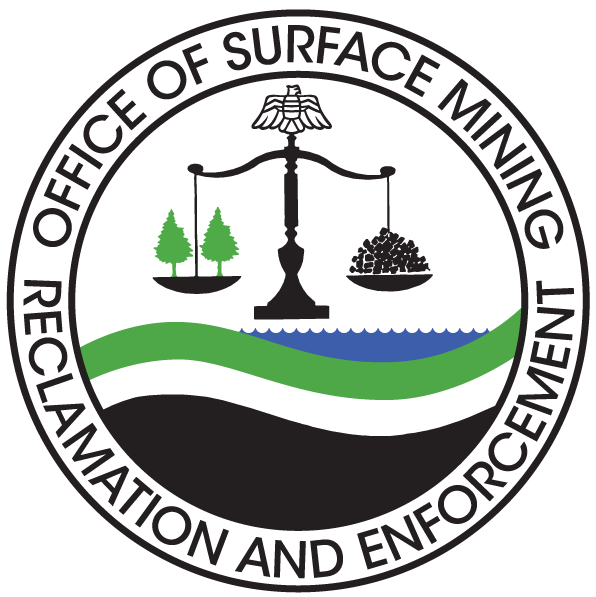Show Notes:
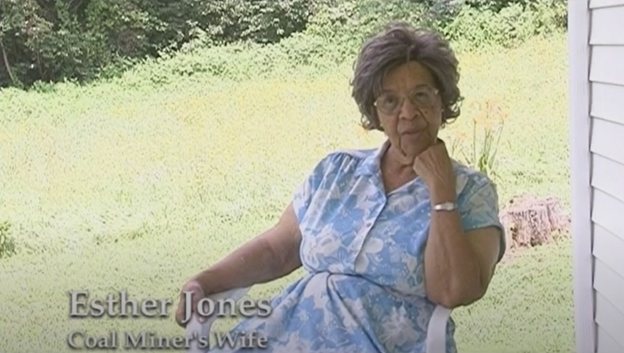
Wake Forest, Virginia
In this episode of Reclaim Restore & More, we speak with members of the National Mine Map Repository (NMMR), a program area within OSMRE charged with maintaining an archive of mine maps for mines throughout the United States. Their expertise led to an investigation of historical accounts. The findings set the stage for an exciting commentary on life at the intersection of American history and coal mining in Wake Forest, Virginia. Esther Jones, a cornerstone in the community, contributes firsthand recollections, recorded by Tyler Bergeron on behalf of Virginia Tech, that enable us to make a connection between this series of mine maps from the state of Virginia and the history of Wake Forest.
Esther (VT INTERVIEW)
Well, my whole family was involved in the mines. My father was a (miner) – you know he worked in the mines. But in the later years, when my husband came along, we, you know, had the mines in the mountain. It was more or less – a family affair. And it was hard…hard work too – you know, working in the mines.
Raphael
The voice you just heard was Esther Jones and was recorded by Virginia Tech. Esther was born in the year 1920 just shy of 60 years after the emancipation proclamation and 2 years after the first World War. She lived through World War II when the United States nearly doubled neighboring powers in coal output and the civil rights era when segregation and integration were points of contention.
Her unique experiences and recollections lead us to investigate the lives lived therein at the intersection of American history and industrial coal mining. The existence of this record of Ester’s life at Virginia Tech gave the National Mine Map Repository important information that enabled it to make a connection between a series of mine maps from the state of Virginia and the history of Wake Forest.
The contents of this podcast are for informational purposes only and should not be interpreted as an endorsement of any product, service, or enterprise.
I'm your host Raphael Evans and today we’ll be speaking with members of the national mine map repository. An organization within OSMRE that is charged with maintaining an archive all closed and abandoned mine maps throughout the United States. The NMMR assists both private and public sectors in evaluation of map related data for economic valuation, risk assessment, industrial and commercial development, highway construction, and the preservation of public health, safety, and welfare.
Essentially, their collection of mine maps is used to identify what’s underfoot so that those with plans to move earth to reclaim or build know where potential issues may occur. Sometimes the NMMR staff work on projects that have limited data making it more challenging to identify the surrounding area and understand what took place on a mine map.
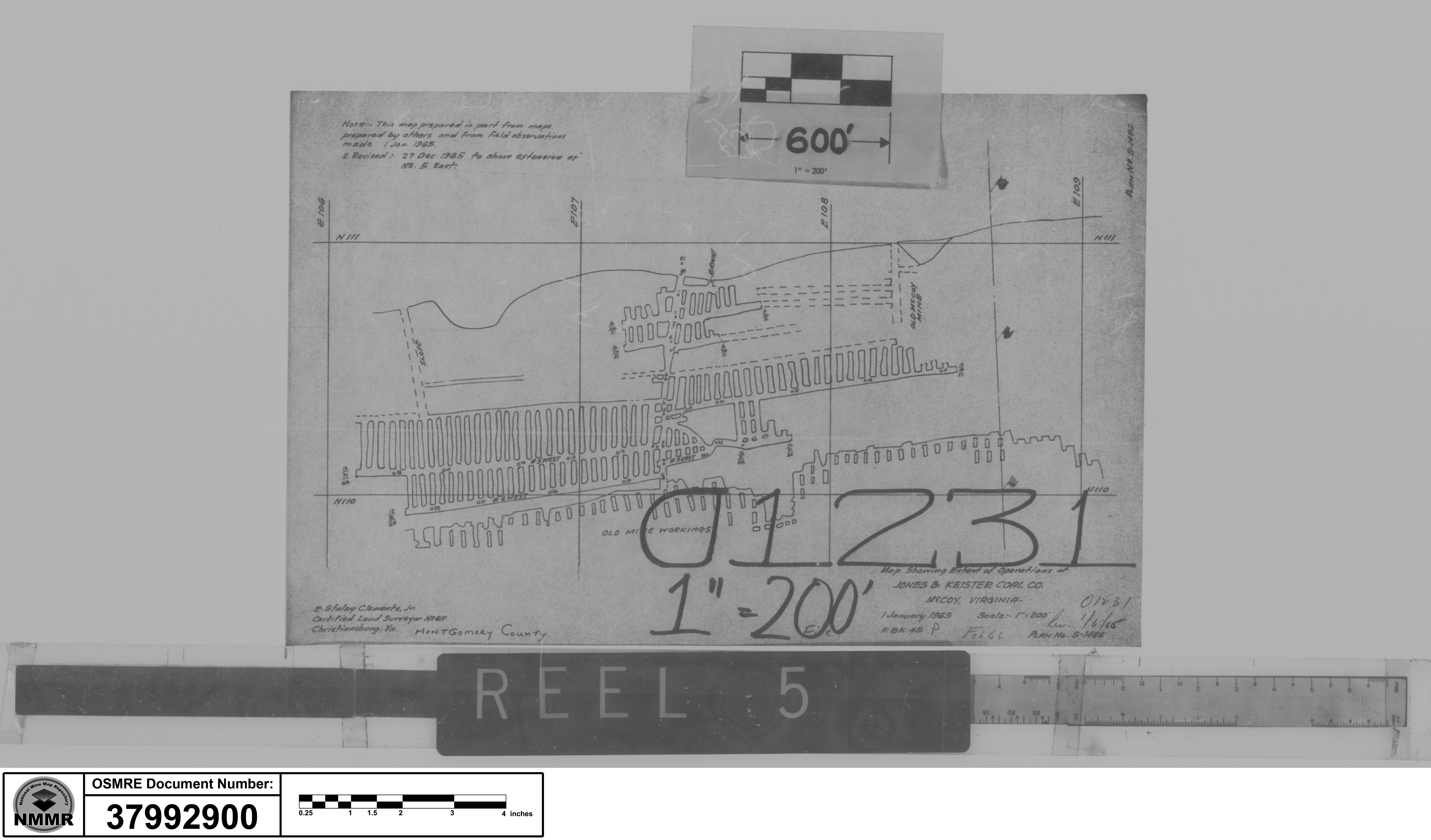
Due to that lack of information these projects end up being called cold cases. Program Specialist Beth Spindler, and two Archive Specialists Jessica Reitz and Chelsea Solotky were working on a particular cold case that had more than just map data involved. And that’s what brings us here to today to discuss a Bright Spot in a Dark History.
So, now that we’ve prefaced the conversation. Beth why don’t you give me a little bit more insight about the lay of the land, and Chelsea I’d like to get you to chime in on why this story was so important and why the National Mine Map Repository didn't give up on this cold case.
Beth
We were working on a project to update, improve, the data for a series of mine maps from the state of Virginia. If you're not familiar with the geology and economic history of Virginia, it has some very major bituminous coal mining fields in the western portion of the state. In the course of doing this project, I came across a map from a portion of the state that at the time I was unfamiliar even had coal mining. This is in what's known as the valley coalfield in Montgomery County which is a bit further east along the New River, and this was a very small coal field of anthracite and semi anthracite coal which is a different form of coal.
Due to its geologic history is actually much harder to locate using the traditional means we use to locate mine maps which is often looking at this stratigraphy and correlating that to the service topography, Chelsea probably can tell you more about this as a geologist, but in anthracite beds the coal seams are often folded or steep the angled and it's not as clear to just look down at the surface to see exactly where the coal mine is. Based on how it looks underground, it may look very different from the surface.
Chelsea
We are in the areas of McCoy, Virginia, Wake Forest, Virginia and Montgomery County, Virginia. So, this area of anthracite, coal vein is about 100 miles east of the typical bituminous coal beds in Virginia. And anthracite is really special, especially to stumble upon it this way because it is more lucrative and a more expensive form of coal than that bituminous coal.
So, what made this map a really interesting coal case was the map itself actually had a lot of decent data on it. So, when we have a cold case where we can't geo-locate or pinpoint that exact mine location. We pass it around the team, we work together. We really try to find it and especially maps where this map had a north arrow; it had Virginia State file index numbers on it. It had a coal, I think a company name, a coal company name; it had an ID of location on it.
So, there was a decent amount of data to be pulled from this map. So, we were definitely not going to give up on this map with the amount of data available. But it was really hard to locate!
Beth
And in the course of trying to desperately find any information about this that I could, I ended up just doing the most basic thing imaginable; for a lot of people this might be their step one, but this is our step #1 million at the mine map. I just googled the name of the mine and to my surprise there was a news article with an interview with Esther Jones who was the wife of the owner of this mine and not just the wife she actually as we came to find out worked at that mine herself and played an important role in its development and maintenance.
Esther (VT INTERVIEW)
I kept the books and kept the payroll, and he had about 21 people that worked there. It was a smaller mine – it wasn’t a bigger mine. And I had to take out the Social Security and you know and also send their payroll up to the people they actually owned it were up in the Baltimore area. I had to make a monthly report, you know, and send it there.
Beth
Without having found that news article, I would never have known anything with special about this mine whatsoever it was just another hole in the ground to me. So, finding her interview is ultimately what gave me the clue to where specifically this mine was located planet earth. For our purposes for making these maps accessible for people that's normally where the story ends. We were able to add some indexing data so that people can find it via geographic or text-based means, and you know – the end. We improved the data, you know, time to move on to another map. Through the course of reading this interview and finding out the history of this mine and that it was an integrated coal mine. That's really where the story opened up for us.
Raphael
Beth, when you mentioned Esther Jones being the wife of the coal mine operator slash owner and also her being involved in a coal mine operating as a black woman for that time period how did this come about where she's married to a coal mine operator and a black family owns a coal mine in that time.
Beth
So, during the civil war era, a huge portion of the land in Montgomery County was owned by a man named James Kent. He also was the largest slave owner in the region according to one oral history during the civil war, after an event known as the battle of Cloyd’s Mountain, union troops stayed on the Kent Estate. I don’t want to use the word trashed the place, but they camped out there and the Kent family fled and returned to find that they had suffered a lot of damages.

Reportedly this was very emotionally distressing to James Kent, and he left the operations of his estate and his farm to his wife Elizabeth upon her death she left in her will a large portion of land on rush mountain to formerly enslaved peoples who worked on the Kent Estate. This area was later known as Wake Forest and the legend goes that when the peoples moved in there to set up their community the forest was awoken – hence the name Wake Forest.
Esther (VT INTERVIEW)
That’s how the name became Wake Forest. They said, “where they have awakened the forest,” you know, when it comes to cutting down the trees, you know, the people building homes and building churches and so forth and all. So, that's what I was told that that's how the name wake forest came about.
Beth
Finding her interview is ultimately what gave me the clue to where specifically this mine is located on planet earth and for our purposes of making these maps accessible for people that's normally where the story ends. We were able to add some indexing data so that people can find it via geographic or text-based means and, you know, the end. We improved the data – you know, time to move on to another map. But, through the course of reading this interview and finding out the history of this mine and that it was an integrated coal mine, that's really where the story opened up for us.
Raphael
I was curious though from your P-O-V, when you explained the lucrative nature of anthracite and what was found in this coal seam. How crazy is it that Elizabeth Kent would donate or willingly part ways with land that could have such a great opportunity for her if they continued mining it, or if they chose to mine it – I guess the mining didn’t happen. Is that just a big happy mistake for those that inherited the land.
Chelsea
Yeah, I think just a lot of things lining up very specifically for this to happen this way in this area.
Through the ambitious endeavors of striving to gain land a lot of recently freed blacks went into debt and then creditors were known to prey on the illiteracy of blacks and poverty so there's a great big socio-economic crisis back in the early 1900’s.
Raphael
So, we’ve talked a lot about the data, Wake Forest and Esther Jones, and in a roundabout way we’ve talked about the mine in question that sent us down this rabbit hole, but I intentionally left out its name to leave room for us to discuss the surrounding details. The Mine seated in the valley coalfield operated by Howard and Esther Jones is called the Jones-Keister Coal Mine. Which prompts the question… why the hyphenation?
Thanks to the NMMR’s research, we know that the mine was co-operated between the Jones family and Warren Keister. Earlier I mentioned that this story incorporated recollections of the lives lived in this area at the intersection of post-slavery and industrial coal mining, and this is the nexus point. Warren Keister’s Grandfather was enlisted in the civil war. So, we have two lineages from very different origins that lead to these two families co-operating the Jones-Kiester Coal Mine. Beth, can you shed some light on the situation.
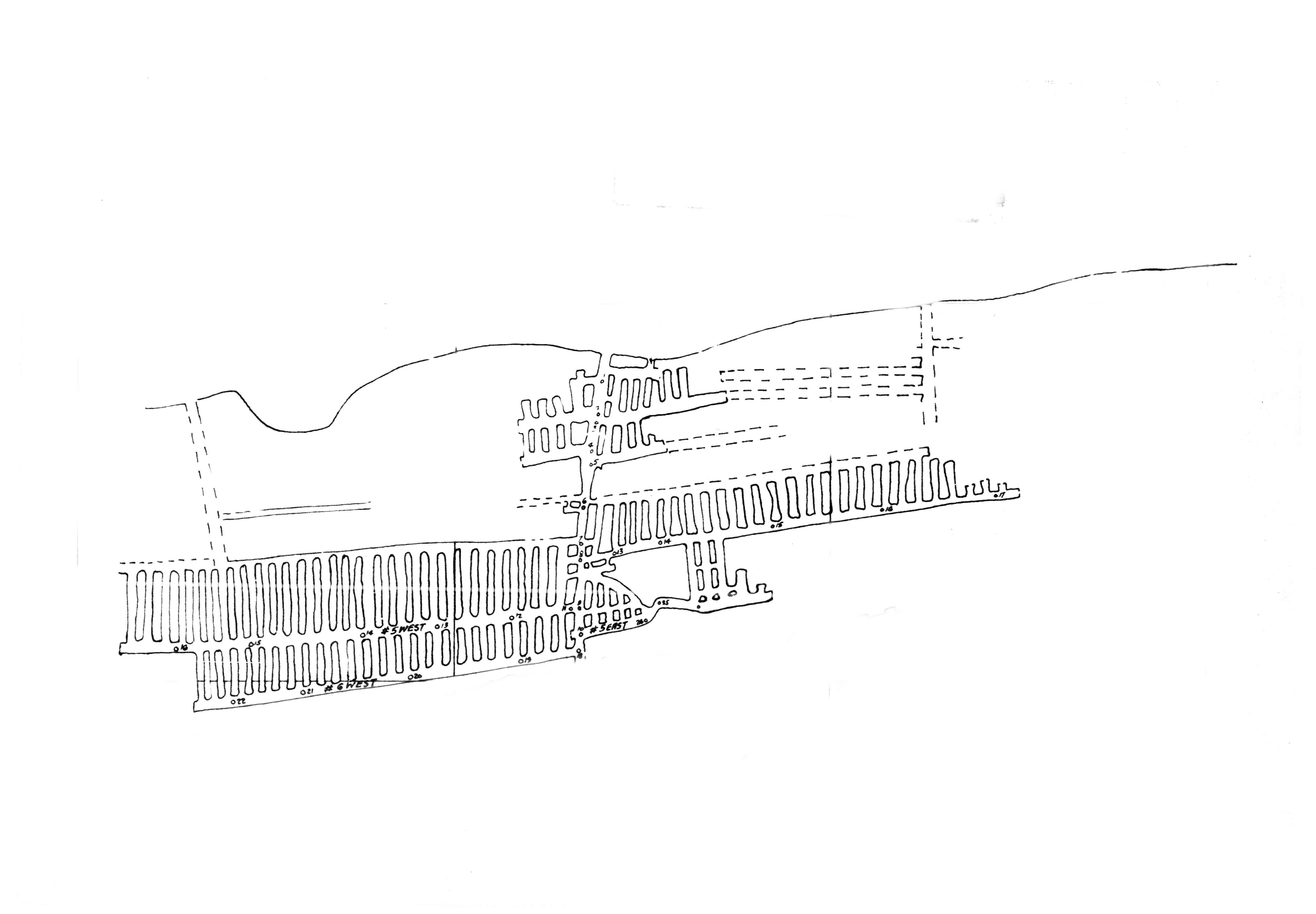
Beth
His grandfather was a man named Benjamin Keister who mustered into the same regiment that fought at the battle of Cloyd’s Mountain back in the 1860’s. I'm not completely sure his grandfather was there there's a chance he mustered out before actually fighting but it still makes an interesting full circle of events go from fighting to preserve human bondage to working side by side with people who were formerly enslaved, and the best I can understand based on the words from these oral histories and other interviews is that the economic opportunities afforded by coal mining just smoothed over some of those other socioeconomic disparities and smooth over I guess the racial tensions because they're all in it together.
Labor mining and unionization history of the coal mines there apparently played a big role in ensuring that blacks and whites received essentially equal pay and I think anyone who has worked in a highly dangerous industry can tell you that it forms strong bonds of camaraderie your life is in the hands of the person you're working next to and when you're down in the mine and think it makes some of those superficial differences disappear when it doesn't matter the skin color or the ethnic origins or the immigration status or anything else about the person you're working with they just you both want to come out alive at end of the day.
I actually have the quote for you that may be of interest from another black coal miner named Oscar Sherman he gave an interview with The Roanoke Times where he said, “When you got that coal dust on you. You couldn't tell who was black or white.” So, in some ways there was a very literal element of, you know... It didn't matter who was next to you because when you're all just down there in the dark and the dust you're just a human.
Raphael
When it comes to coal mining and its history and black history and how they intersect I think that's an incredibly beautiful way to look at it. That when laboring and toiling over something, some of our natural biases could dissolve and fade away.
Beth
I don't mean to suggest that there was no such thing as racial strife or racial tension it was still an era of desegregation, but I found it very interesting when reading the interviews, the way pay scales worked in the mines back in that day was essentially loaded a cart full of coal and that's how much you get paid per car. So, there’s less room for discrimination there. That doesn't mean there's no room for discrimination.
In another interview with a former black coal miner, he did point out that there were cases where whites got preferential choice over which part of the mines, they would work in, so you know a richer part of the vein the more productive headings. When you drive the tunnels in that's what's known as a heading. Those were often preferentially given to white people so again this didn't eliminate racism.
This didn't eliminate the disparate impacts that race may play in any you know in the workplace, but it certainly provided more opportunities for parity than in other places where you might be getting paid a wage or put into debt peonage with um tenant farming and similar extremely exploitative labor practices.
Raphael
I might be correct in saying that I heard one of Esther’s oral histories where she said, “You know stuff still happened and it didn't dissolve everything,” but Chelsea it sounds like you were getting ready to chime in. Go for it.
Chelsea
Yeah, you know and Esther Jones oral history she had a really unique outlook on the area she grew up in so one of my favorite quotes from her is saying that you just go on you love everybody and you'd be happy but she grew up alongside white members of her community belonging to the same church as her and they were able to go in town and shop peacefully.
So, her view on this is really skewed by how special this area is and that could absolutely have been from the Big Vein Coal Mine and Superior Anthracite Company paying similar wages in the mines before you know the war so big implication there.
Esther (VT INTERVIEW)
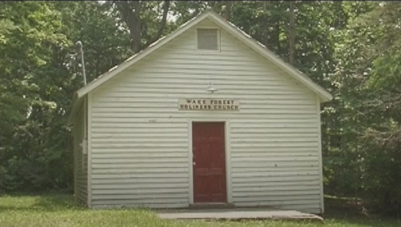
They would mention it, but we've never dwelled on that too much; because my neighbors when I lived back, you know, in the mountain where my home was. They were all white you know around us you know, and we was always close. I mean it was no big issue you know. It's something that's going to come up all the time a little something you know, but they worked together in the mines together and we were always together.
So, it wasn't too much of that, but I think when they kind of went into the army – I heard some of them say that they were making a difference you know and all. But I was always taught that people were people we didn't choose who we were going to be so why make an issue of it. Just go on in love with your body and be happy.
Now we worship again this word church you know we had a good time so sometimes a white minister sometimes a black minister you know, but I had a merry, merry good time. I had good neighbors though – real good neighbors, and I had my in-laws live right down below me, and we just always have been… in this area we were close-knit people.
Beth
If you don't mind me adding, we're also outsiders looking in but from my impression from reading the interviews is that I found most people being interviewed about their experiences in this community want to focus on how proud they were to be a part of creating a community where integration was possible.
And not to erase any inequities but integration doesn't happen by accident. That took a lot of hard work and effort and emotional investment from them. So, I do think it's worth celebrating because otherwise – you're overlooking the joy and achievement in their community from both the black and white people who made that possible.
Raphael
This is probably a very unique case when people could have less tense interaction, but I do think that unique or not it's there's room for us to celebrate the bright spot that it is.
Chelsea, can you tell me a little bit about the National Mine Map Repository outside of this story and then if you want to intersect it as you give us the rundown go for it, but yeah just tell me a little bit about the NMMR.
Chelsea
So much of what we do in archiving mine maps is preserving a piece of history so my background is in geology and certainly the earth science background is important when looking at coal mines and other mines and coal veins and coal seams but we are preserving a really special piece of history and we are able to put that into the mine map repositories database and we service customers from all over the country and maybe someday someone from Esther and Howard Jones family will come to us looking for the specific mine map.
That is something we do daily. We service customers who are looking to put together their grandfather's history who was a coal miner. So, we have a whole process on how we archive maps this specific project where we uncovered the Jones keister mine was a microfilm project, so we do a lot of historic maps that come to us that way. So, we're experts on my maps we're experts on table scanners we're experts on microfilm and images so we have this service available to you or anyone else who has mine map needs.
Raphael
Speaking of you just gave me like one of the best transitions to my next question with the map telling my story. Jessica, what story do maps tell in regard to the mining and post mining actions that take place in an area.
Jessica
Oh, that's a good question. So what story does it tell well it tells of it can tell a lot of different things and the one thing that I think for me stands out the most is especially if we get multiple mine maps of the same mine in different years just seeing the difference in size of some of these maps that these mines, for example you can see projected workings on a map from say 1901 and then if you have a mine a map from say 1910 and you can see the projected workings that have been worked already now on this map and then you see more projected workings.
It just kind of tells a story of how mines grow and how mines –they're living how just exactly that they're living beings, and they move, and they grow, and they expand and it's neat to see difference in in those types of things and how the story that it tells.
Raphael
It transitions from like Jessica said – it's an understanding of what's underfoot and just the history of a mine as it progresses. Then also I know that you guys at least to my understanding have also been able to inform projects whether it's current or post-mined when the reclamation process begins for us to start that next chapter of an area.
What popped up into my head is that history in the same way that Esther Jones is still living to our knowledge – we're working with things that have preceded us that sometimes need to be unearthed in the story but it's very much so an ongoing thing.
Preserving history, preserving the importance or echoing the importance of the Jones family, preserving the history of these mines with NMMR, and using that history to inform how we improve the future for these reclamation projects.
Jessica
It's just it's such an interesting history to just know, and she talks about having her children at home and how her husband went off to war and how they met and she's just an amazing woman and this whole story like you said Raphael – it's very unusual. Just to be able to find these little snippets of history is amazing. That you know things that people don't realize or don't know about, and I mean...
I lived in Virginia for many years but I never even heard about this this mine and the fact that Chelsea and Beth and everybody found it before I came here it just it it's so cool it's it and it's a pleasure to work with you know I just I love being able to recap the history and know that there were people like Esther out there that just she loved what she did she loved her husband she loved her community and she loved her mine.

I don't know if Beth or Chelsea told you about it. Virginia Tech actually owns the area and they've done a lot of archaeology in the area they did find the cemetery and they do have a marker there currently and it says, “We the residents of Wake Forest being largely descended from the slaves of Kentland plantation whose labor skill blood sweat and tears although they were held in bondage against their will brought Kentland into existence and kept it alive and whose memories are still alive on the land,” and I just think that that gives something to the story.
Raphael
Thank you, Jessica, for sharing that beautiful statement. I’d like to thank Beth, Chelsea, and the National Mine Map Repository for sharing this cold case and being willing to have this conversation as well. For more information, visit www.osmre.gov or connect with us through any of these social media channels: Facebook, Flickr, Instagram, LinkedIn, X, Spotify and YouTube. Once again, I’m your host Raphael Evans. This has been a Bright Spot in a Dark History. Stay tuned for the next episode of Reclaim Restore and More.
Esther (VT INTERVIEW)
And I was the, as I told you, the bookkeeper – payroll person. And you know when he had his little mines... You know a lot of people that had these little mines, what they call scab mines, they just dug out coal and sold it, you know, for their own living you know. It was, it was exciting when you think about it, but it wasn't all that fun when we were doing it, but all and all it was a…a good life.

